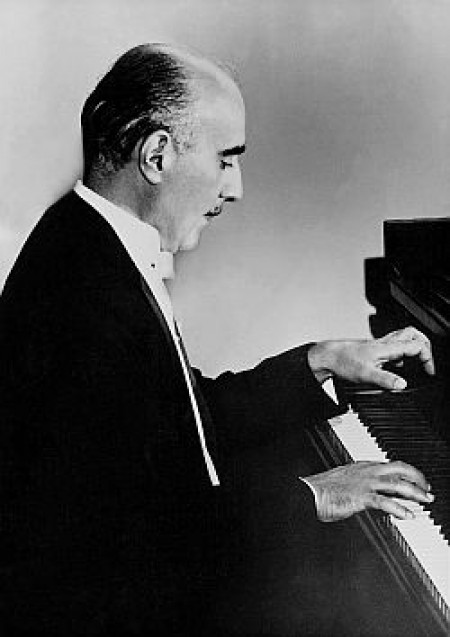
6 May 1918, Budapest – 27 September 1977, Santa Barbara
The pianist, conductor and teacher, Ernő Dániel was chairman of the American Liszt Society. His career, as with many prominent Hungarian scientists and artists of his generation, took place in two locations: till 1949 in Hungary, and for almost three decades, from 1949 to 1977, in the United States.
He began his piano studies as a child prodigy. His first teacher was Emánuel Hegyi; he gained his diploma at the Music Academy in 1941 as a student of Ernő Dohnányi's master course. His career as a pianist looked very promising from 1938 onwards.
From the beginning, it was Liszt's life's work that was in the forefront of Dániel's repertoire. In 1938 he received a Liszt scholarship award. He won his first international successes also with the two Liszt concertos and other Liszt works. He gave concerts in Rome, Vienna, Berlin Milano, Belgrade, Sofia, and many other European cities, appearing as the "comet-like" phenomenon of the new generation of Hungarian pianists. However, already at that time he paid close attention to the new Hungarian piano literature, playing frequently the works of Bartók, Kodály and Sándor Veress in Hungary and abroad alike. In 1946, a radio recording was made in Vienna of several of the important works of the new Hungarian piano literature performed by him.
His career as a teacher began in line with his profound performer's personality: between 1942 and 1948 he was teaching piano at the Music Academy, and his career as a professor continued without a break in the United States as well.
His career in the USA had two locations: from 1949 till 1959 in Wichita Falls in Texas, and from 1961 to 1977 in Santa Barbara in California.
In Texas Dániel pursued artistic activities of exceptional intensity in three areas: he continued his Hungarian career both as a soloist and as a teacher. The third direction in his career, however, represented an important new development: from 1952 he became also a conductor, having acquired professional guidance from Pierre Monteux, George Széll, Eugene Ormándy and other masters. In 1952 he became the music director and leading conductor of the Wichita Falls Symphony Orchestra. As musical ambassador of his homeland, in this capacity he performed compositions by several Hungarian composers, such as Dohnányi, Veress, Viski and Jenő Takács. His outstanding work as a conductor is shown by his appointment in 1953 to the board of the American Orchestra League.
In 1960 Ernő Dániel was appointed professor of piano and chamber music, and conductor of the university orchestra, at the University of California. He realised his Hungarian musical mission here as well: he conducted the works of Kodály, Bartók, Lajtha and Dohnányi, with the participation of Hungarian and European soloists, such as János Starker, Paul Badura-Skoda and Riccardo Ricci.
The American Liszt Society, which was founded in 1967, elected him in 1972 its chairman. His Liszt interpretations evoked great interest and had an effect on American musical life. He also passed on to his students the Hungarian tradition of performing Liszt. Among his hundreds of students special mention must be made of Erzsébet Tusa, Van Cliburn and Todd Crow.
M. B.


